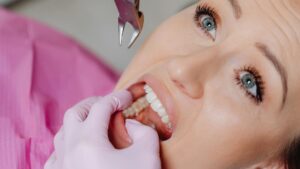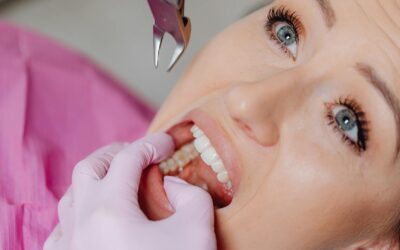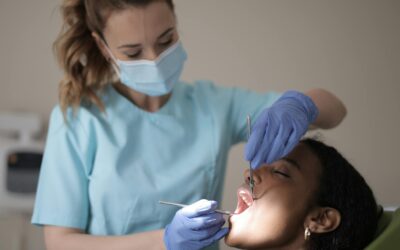Noticing a black dot on your tooth can be alarming. Whether it’s a small black dot on the tooth’s surface or a tiny black dot on the side, understanding its origin is crucial. These spots can indicate various dental issues, from minor stains to early signs of decay. This article delves into the causes, signs, and treatment options for black dots on teeth, providing insights to help you maintain optimal oral health.
Understanding the Black Dot on Tooth
A black dot on a tooth can manifest in several ways:
- Small black dot on tooth: Often appears on the chewing surfaces of molars.
- Tiny black dot on tooth: May be an early sign of decay or staining.
- Black dot on side of tooth: Could indicate plaque accumulation or beginning stages of a cavity.
- Black dot on front tooth: Usually more noticeable and may affect aesthetics.
- Black dot on gum above tooth: Might be an amalgam tattoo or other pigmentation.
While some of these dots are merely cosmetic, others may be symptomatic of more serious oral health concerns.
Also Read: Black Spot on Tooth: Causes, Signs & Treatment Tips
Common Causes
1. Dental Caries (Tooth Decay)
Tooth decay is one of the most common causes of black dots. It occurs when acids produced by bacteria erode the tooth enamel. As decay progresses, it can turn dark brown or black, often starting as a tiny black dot. This is typically accompanied by tooth sensitivity or pain. According to the American Dental Association (ADA), untreated cavities can lead to more severe infections requiring complex treatments.
2. Extrinsic Stains
Extrinsic stains result from external substances. Common culprits include:
- Coffee and tea
- Red wine
- Cola-based sodas
- Tobacco (smoking or chewing)
These substances can leave surface stains on enamel, especially when oral hygiene is inadequate. Though not harmful in themselves, such stains can be aesthetically displeasing.
3. Chromogenic Bacteria
Certain bacteria produce pigmented by-products that can lead to dark stains. These black stains, often found near the gum line, are more common in children and can reappear even after dental cleaning. The condition is mostly harmless but can be persistent.
4. Amalgam Tattoos
If you’ve had dental work involving silver amalgam fillings, you may develop an amalgam tattoo. This appears as a black or bluish dot on the gum above a tooth due to amalgam particles embedded in the tissue. It is benign but permanent unless removed surgically.
5. Tartar (Calculus) Build-up
When plaque is not adequately removed, it can harden into tartar. Tartar can trap stains and appear yellow, brown, or black. It commonly accumulates around the gum line and between teeth. Regular dental cleanings are the only way to remove it.
6. Enamel Hypoplasia or Fluorosis
Enamel defects such as hypoplasia or excessive fluoride exposure during tooth development can result in dark spots. These spots may resemble decay but are structural in nature. Although often harmless, they may weaken teeth and make them more prone to cavities.
7. Dental Trauma
A trauma or injury to a tooth may lead to internal bleeding within the tooth, eventually resulting in discoloration. A black dot in this case may indicate pulpal necrosis and should be evaluated by a dentist immediately.
Note: Not every black dot means decay. Sometimes it’s just surface staining or discoloration due to external factors. However, a dental evaluation is the only way to be sure.
Signs to Watch For
- Discoloration: Black, brown, or dark spots that don’t go away with brushing.
- Tooth Sensitivity: Especially to hot, cold, or sugary foods.
- Pain or Discomfort: Mild to sharp pain when biting or chewing.
- Cavities or Holes: Noticeable pits or holes in the affected tooth.
- Bad Breath or Bad Taste: Persistent halitosis may accompany decay.
- Swelling or Redness: Especially if the dot is near the gum line or accompanied by a black dot on the gum above the tooth.
Remember: Don’t ignore even a tiny black dot on your tooth. Early detection can prevent expensive treatments later.
Treatment Options
1. Professional Dental Cleaning
For surface stains and minor plaque accumulation, a professional cleaning by a dental hygienist is usually sufficient. This will remove:
- Tartar buildup
- External stains
- Mild discoloration due to food and drink
This is often the first step before determining whether further treatment is necessary.
2. Tooth-Colored Fillings
If decay is the cause, the dentist will remove the decayed portion and restore the tooth using a composite resin. This material matches your natural tooth color, making the repair almost invisible.
3. Fluoride Treatment
In early-stage decay (incipient caries), professional fluoride treatment can remineralize the enamel and stop the progression of cavities. Your dentist may also recommend high-fluoride toothpaste for daily use.
4. Dental Sealants
Dental sealants are protective coatings applied to the chewing surfaces of molars. If you’re prone to getting black dots due to early decay, sealants can be a preventive measure to shield the teeth from bacterial attack.
5. Root Canal Therapy
If decay reaches the tooth pulp, a root canal is required. The procedure involves removing infected tissue, cleaning the canals, and sealing the tooth. It can save a tooth that would otherwise need extraction.
6. Teeth Whitening
If the black dot is due to staining, professional whitening treatments can help lighten the enamel and improve aesthetics. Options include:
- In-office bleaching
- At-home whitening kits provided by your dentist
7. Cosmetic Options
For stubborn spots or aesthetic concerns, other options include:
- Dental bonding: Covers imperfections with a resin material
- Veneers: Thin porcelain shells covering the front surface of the tooth
- Crowns: Full coverage for teeth that are severely damaged or decayed
Prevention Tips
Maintaining good oral hygiene is the most effective way to prevent black dots on teeth. Here’s how:
- Brush Twice a Day: Use fluoride toothpaste and brush for two minutes.
- Floss Daily: Removes food particles and plaque between teeth.
- Limit Staining Foods: Cut down on tea, coffee, soda, and red wine.
- Avoid Tobacco: Smoking or chewing tobacco significantly contributes to staining and decay.
- Regular Dental Check-ups: Visit your dentist every six months for cleaning and examination.
- Use a Mouthwash: An antiseptic rinse can help reduce bacteria.
- Drink Plenty of Water: Especially after meals to rinse off food particles.
Tip: Chewing sugar-free gum can also help increase saliva flow and reduce the risk of decay.
FAQs
Can a black dot on tooth be a cavity?
Yes, it’s often an early sign of a cavity. If untreated, it can worsen and require more extensive dental work.
Why is there a black dot on my tooth that doesn’t hurt?
It could be a stain or early decay. See a dentist for confirmation.
Will a black dot on tooth go away on its own?
No, decay won’t go away. Stains might lighten with cleaning.
Is a black spot on a child’s tooth normal?
It’s common due to chromogenic bacteria. Usually harmless but check with a dentist.
Do black dots on teeth always need drilling?
Not always. Early decay can sometimes be treated with fluoride or sealants.
When to See a Dentist
If you observe any of the following, make a dental appointment immediately:
- The dot is growing in size
- Pain or sensitivity develops
- You see a hole or pit in the tooth
- Bad breath persists despite good hygiene
- Swelling or pus forms around the tooth or gum
Recommended Reading: 50 Must-Know Tooth Health FAQs Answered by Experts
Conclusion
A black dot on the tooth may seem minor, but it should never be ignored. From harmless surface stains to serious tooth decay, the causes are varied. Recognizing the signs and seeking early treatment can prevent pain, discomfort, and costly dental procedures down the road.
Through consistent oral care, regular dental check-ups, and a proactive approach, you can keep your smile healthy and free of black spots. Remember, oral health is a window to your overall well-being. Stay vigilant, stay clean, and consult your dentist at the first sign of trouble.
Disclaimer: The content provided in this article is for educational and informational purposes only. It does not substitute professional medical advice, diagnosis, or treatment. For guidance specific to your dental condition or recovery, please consult your dentist, oral surgeon, or licensed healthcare provider.










0 Comments